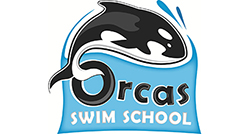Swimming is a life skill that everyone should possess. Babies lack the strength, co-ordination and motor skills to swim on the surface of water until 30 – 36 months of age.
A child is never ‘safe’ around water and should always be under parental supervision.
Children have a natural affinity for water, therefore they learn to swim though discovery, fun and play.
Scientists determined, children who were taught to swim by 5 years of age, had statistically higher IQs because of their early sensory/motor stimulation in the water.
IN ASSOCIATION WITH VARIOUS SWIMMING BODIES OUR METHOD OF TEACHING INCLUDES THE FOLLOWING
• Using tender loving care
• Adopting age appropriate skills
• By routine and repetition
• With on going progression
• By rewarding different levels of achievement.
WE SPECIALIZE IN TEACHING BABIES AND PRE-SCHOOLERS THE FOLLOWING SKILLS
• Water orientation
• Water awareness
• Safety skills in and around the water
• Swimming skills in preparation for the swimming strokes
• Breath-control through familiarising the child with voluntary submersion by means of verbal,
physical and visual cues prior to submersion
• Anxiety will be eliminated, with time and patience
• Confidence will be developed, trust will be maintained and breath control will be learned.
Weekly lessons will be broken down so that Swimming Instructors and learners will have a clear understanding of what is required. Lesson plans will be drawn up, according to the learners’ progress.
The weekly program will be taught to all age groups and children of differing abilities. Swimming instructors will adapt the intensity of each exercise to the ability of each learner. As an example a beginner will do three “speedboats” a short distance towards the steps, where an advanced swimmer might do “speedboats” across the entire pool.
Regardless of the child’s level of skill, from novice to advanced swimmers, we can expand their knowledge and improve their skills. This will serve as a foundation for future life skills and will help them attain personal goals.
We specialize in special needs as well.
Children with ADHD can excel in competitive sports for example swimming, running and cycling. The sports help them find a structure and a focus, the training programmes can be a useful release for their excess energy.
Michael Phelps the Olympic swimmer had ADHD as a child. He found the swimming pool a safe haven with boundaries.
A child with Autism can usually do anything a Neuro typical child can through proper guidance. Teaching a child with Autism to swim allows them to work the large muscles of the body, which produce chemicals that are sent to the brain that produce further chemicals that improve cognitive function. Multiple mental disorders and diseases can be improved through physical activity. This has been seen in both children and adults in a variety of studies performed to link the benefits of exercise and cognitive function.
|


















